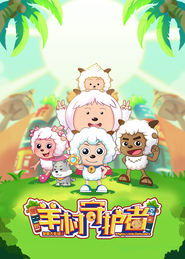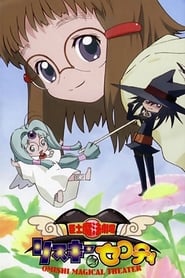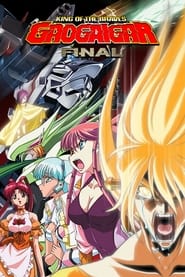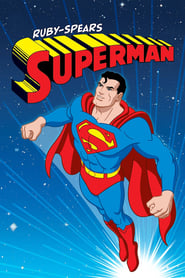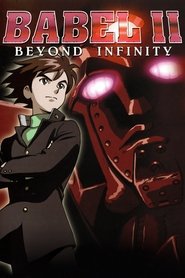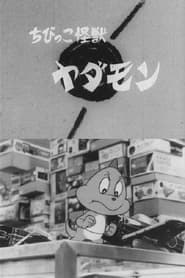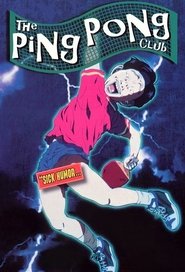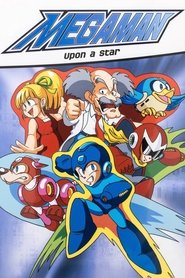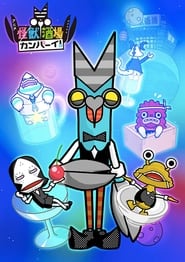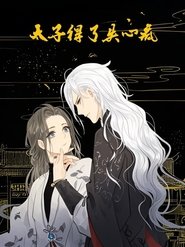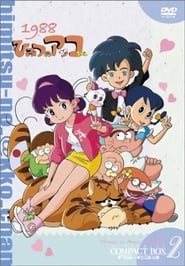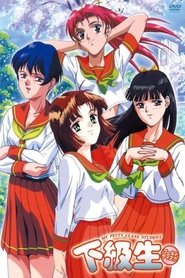Popular Animation TV Series - Page 293
-
Kikoriki: The ABCs of Health
2008
star 6Nyusha, Krosh, Exhik, Losyash, Karych, Olga and Kopatych will demonstrate how important it is to take care of yourself, exercise and strengthen immunity. Together with the characters the audience will learn simple rules that will help maintain health for many years to come. -
Omishi Magical Theater Risky Safety
1999
Omishi Magical Theater: Risky Safety is an anime created by Rei Omishi, and it follows the journeys of an apprentice shinigami, or death god, named Risky and an apprentice angel named Safety who have been trapped in the same body. Whoever is in charge of the body depends on the emotions of those around them; if people are happy, then Safety appears, but if people are upset, then Risky takes charge. -
King of the Braves GaoGaiGar FINAL
2000
star 9.2A new threat makes its appearance on Earth. GGG - with Guy Shishio and the newly-constructed GaoFighGar - team up with their French counterpart Chasseur to battle the Eleven Kings of Sol. -
Superman
1988
Superman
1988
star 6.7One of the greatest superheroes of all time, Superman, takes to the air in this action-packed animated series. Disguised as Clark Kent, Superman uses his powers to overcome the forces of evil in a tireless crusade against crime and injustice. -
小仙之遥
2025
-
Babel II: Beyond Infinity
2001
star 6Koichi is an ordinary youth given extraordinary powers to fight a shadowy underworld of renegade psychics. Hidden in a forgotten desert lies the tower of Babel, created by an unknown force. As its successor, Koichi summons three psychic guardians and challenges Yomi, Leon and any other renegades brave enough to stand in his path. -
Willy Fog 2
1994
Willy Fog 2
1994
star 5.1Willy Fog is again challenged by Sullivan and embarks, with his friends, in search of a secret path to the center of the Earth and the depths of the sea. -
Chibikko Kaiju Yadamon
1967
Chibikko Kaiju Yadamon is a Japanese black and white anime series created by Ushio Souji, an alias of Tomio Sagisu. Yadamon is also famous for its manga adaptation, which was the second professional work of Go Nagai. -
Parasol Henbe
1989
Parasol Henbe
1989
Parasol Henbe is a Japanese anime series produced and directed by Fujiko Fujio in 1989 which ran for 200 episodes and was translated into many languages - Chinese, English, Hebrew and Spanish amongs them. Abiko also adapted the series into a manga. -
Patlabor: The New Files
1990
star 10Special Vehicles Division 2 is back on duty, along with their Ingram Patrol Labor (Patlabor) robots. Using their courage as well as the Ingrams, Captain Goto's motley crew of officers battle crime in Tokyo city. They also deal with their personal lives, as well as the supernatural. -
The Ping Pong Club
1995
The Ping Pong Club
1995
star 5.6Inaho Jr. High's Boys Ping Pong Club has only 6 members, the club minimum. Takeda is your average nice guy. Kinoshita is good looking and popular with girls. Unfortunately, the rest are branded as losers. Tanabe is too foreign, while Tanaka is petite and perverse. Maena and Izawa are truly deviant, and their crazed antics have earned the team some powerful enemies. In spite of their differences, the team needs to work together to retain their practice room and club status. -
Mega Man: Upon a Star
1993
star 5Japan is in grave danger! Mega Man must prevent Dr. Wily from destroying Japan as we know it. But how? With a little knowledge of Japanese culture and geography, Mega Man and his pals will try to stay one step ahead of the mad scientist. But will they be able to defeat Dr. Wily in time to save Children's Day? Or to avert the worst typhoon in history? Or to keep Mt. Fuji from erupting again? -
宝狄与好友
2014
-
太子得了失心疯 动态漫
2019
太子得了失心疯 动态漫
2019
-
Dangaizer 3
1999
Dangaizer 3
1999
star 210,000 years ago, acting as judge, jury and executioner, Dangaizer sealed the fate of mankind by reducing it to ashes. Slowly, mankind rebuilt their civilization and once again stands at its peak. Hiding amongst the survivors of mankind, the evil organization of Goma lies in wait for the return of Dangaizer. This time, it’s a race to stop the awakening of the 3 that can pilot Dangaizer and subjugate the world to their rule. Will the 3rd pilot learn her true destiny and awaken in time, or will the world find a new destiny in the hands of Goma? -
Akko-chan's Secret 2
1988
Akko-chan's Secret 2
1988
star 8Himitsu no Akko-chan is a pioneering magical girl manga and anime that ran in Japan during the 1960s. The manga was drawn and written by Fujio Akatsuka, and was published in Ribon from 1962 to 1965. It predates the Mahōtsukai Sunny manga, printed in 1966. However, that title is the first magical girl anime as Himitsu no Akko-chan was not broadcast until 1969. The original anime ran for 94 episodes from 1969 to 1970. It was animated by Toei Animation and broadcast by TV Asahi. It has been remade twice, in 1988 and in 1998. Two Akko-chan movies were made in 1989 and five were created between 1969 and 1973. It also adapted into a live action film released in September 1, 2012. -
诸神的紫菜包饭 动态漫
2016
诸神的紫菜包饭 动态漫
2016
-
かきゅうせい
1999
 Netflix
Netflix
 Amazon Prime Video
Amazon Prime Video
 Apple iTunes
Apple iTunes
 Apple TV Plus
Apple TV Plus
 Disney Plus
Disney Plus
 Google Play Movies
Google Play Movies
 Paramount Plus
Paramount Plus
 Hulu
Hulu
 HBO Max
HBO Max
 YouTube
YouTube
 fuboTV
fuboTV
 Peacock
Peacock
 Peacock Premium
Peacock Premium
 Amazon Video
Amazon Video
 The Roku Channel
The Roku Channel
 AMC+
AMC+
 Kocowa
Kocowa
 Hoopla
Hoopla
 The CW
The CW
 Vudu
Vudu
 Starz
Starz
 Showtime
Showtime
 PBS
PBS
 Pantaflix
Pantaflix
 FXNow
FXNow
 Tubi TV
Tubi TV
 Kanopy
Kanopy
 Comedy Central
Comedy Central
 Crunchyroll
Crunchyroll
 Microsoft Store
Microsoft Store
 Redbox
Redbox
 Sun Nxt
Sun Nxt
 ABC
ABC
 DIRECTV
DIRECTV
 Crackle
Crackle
 Fandor
Fandor
 Plex
Plex
